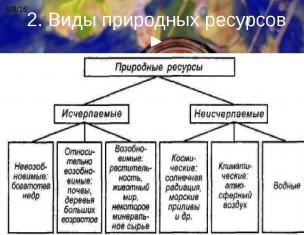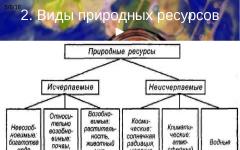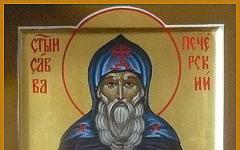A.P. Chekhov is known in literature as a master of a short satirical story, which was based on an anecdotal situation from everyday life, and the heroes were ordinary people snatched from the crowd. Thanks to the use of a variety of visual means, the author managed to show the vulgarity and immorality of his contemporary society in one or two pages. For Chekhov, everything played a big role: the exact name, the telling surnames, the peculiarities of speech, and the objects that belonged to the characters. All the images created by the writer in the early stories are surprisingly memorable: it is enough to name one or two details or phrases, and the reader immediately remembers which work Ochumelov, Chervyakov or non-commissioned officer Prishibeev are from.
An analysis of the story “Chameleon” written in 1884 allows us to understand why the writer’s works do not lose their relevance and popularity even a century later.
Plot and main characters
The scene is a market square, along which the police warden Ochumelov strides importantly. Next to him is Eldyrin, a policeman. Their measured progress is disrupted by a cry - it was Khryukin who was bitten on the finger by an unknown dog. This occurrence becomes the beginning of an action during which the warden, as a representative of the authorities, will need to make a decision regarding the fate of the dog. It would seem, what could be simpler? But not in this case. Chekhov builds the plot in such a way that the described situation becomes a reason to show who Ochumelov is.

“Chameleon” continues to clarify the circumstances of the case. Khryukin complained that he was walking, not touching anyone, suddenly this dog grabbed his finger, and he, a goldsmith, would now not be able to work. It seems that everything is clear for Ochumelov - a protocol needs to be drawn up and the dog exterminated. But then someone from the crowd said that this was General Zhigalov’s puppy. The thrown phrase immediately influenced the decision made. And the cause of the incident became clear: Khryukin himself poked the dog in the face with a cigarette, so it bit him. Further, the hero’s very behavior suggests which work Ochumelov is from. He behaves like a chameleon. Depending on the content of the remarks of passers-by - the dog turned out to be either the general's or a stray - the warden still could not decide who was the true culprit of the incident. It is difficult to convey what happened to him during this time. He instantly, without any hesitation, made impartial remarks either to the frightened dog or to Khryukin. So it turned out that the fate of the dog began to depend entirely on who its owner was. It all ended with the fact that “this little guy” - not Zhigalov’s dog, but... the general’s brother - was released in peace.
Speech characteristics of the characters
The peculiarity of the story is that it consists almost entirely of dialogues. And for the most part, he always attached special significance to the speech of the heroes. And in this case, the dialogue helps to reveal their images, as well as to reveal the essence of such a concept as servility - it is this that underlies the behavior of the warden. Ochumelov’s speech is replete with bureaucracy - a feature of the position, colloquial and vulgar words: “Kuzka’s mother”, “healthy”, “everyone is a pig”, etc. - a symbol of his power and an indicator of low culture. His personal importance in society is indicated by the pronoun “I,” which he uses in combination with the verbs “I’ll show you,” “I won’t leave it like that.” And only when it turns out that the dog is still related to the general, the reader is surprised to learn that the warden’s vocabulary also includes diminutive words: “dog.” And his tone changes from orderly and official to obsequious and flattering.
Artistic details
In Chekhov, as a rule, portrait descriptions of the hero and the author’s indications of his position in society do not play a big role. The details in his appearance speak about this better than any words. Ochumelov is a man who uses his official position everywhere. This is already indicated by his movement across the square: he walks slowly and importantly, looking around with the air of an owner. Seeing the noisy crowd, he immediately unceremoniously “crashes” into it. Clear movements speak of his self-confidence. Despite the embarrassment that occurred during the trial, he will continue his journey with the same measured and confident step.

An important detail is the bundle in his hands and the sieve with gooseberries - it is no coincidence that the author emphasizes: “confiscated” - which the policeman is carrying. This is their “prey”, symbolizing power.
And, of course, one cannot fail to note the warden’s new overcoat. By the way, it is she who is remembered most by the reader, and just one word immediately suggests which work Ochumelov is from. It's summer outside, but he's wearing an overcoat - an indication of his position and position. During the conversation, the warden takes it off and puts it on several times, as he feels hot and cold. Finally, after all the proceedings, Ochumelov confidently wraps his overcoat and moves on. Thus, this detail conveys the character and feelings of the hero better than all portrait descriptions.
Why Ochumelov?
Another technique typical of Chekhov's stories is speaking surnames. First, it should be noted that the hero’s name and patronymic are not mentioned in the work. This is not necessary, since for everyone he is an “important person” whom you simply cannot turn to. The surname is associated with the words “go crazy” and “plague”, which may indicate the typical character of the hero. Even in the story, it’s not just Ochumelov who is like this. The characteristics of the behavior of the hero and the crowd turn out to be the same. Those gathered quickly succumb to the influence of the overseer and take up his point of view, again out of a desire to please. This phenomenon, like an infection, is spreading to more and more people who have learned to adapt and skillfully take advantage of their position.
The meaning of the story's title
In nature, a chameleon is a reptile that easily changes its color and adapts to its environment. This saves his life.

The title of the story fully reflects the essence of the main character. A chameleon is a person who easily adapts to what is happening. But here we are not talking about life and death, but about the desire to fit in well and have benefits for oneself (not for society!) in any situation.
The role of the story “Chameleon”
At first, the work makes you laugh. However, despite its apparent insignificance, "Chameleon" became a rather serious parody of the control system that existed at the end of the 19th century.

And it is no longer so important which work Ochumelov is from. In the minds of readers, he forever remained the personification of constant admiration for those who stand above. And if he begins to grovel before, albeit a general’s, but still a dog, such a story leads to very sad thoughts about the vicious structure of the entire country.
Chekhov's humorous story "Chameleon" was written in 1884. This is a living picture of the morals of the bourgeois class and a satire on it. The main character of the work is the police warden Ochumelov, who is the very “chameleon”. Using the example of a situation with a dog, it is shown how a person adapts to higher ranks.
It doesn’t matter to Ochumelov whether Khryukin’s dog bit him or he bit the dog. People like him don't care about the truth. Their main goal is to stay in their place. Therefore, the entire story is occupied by a description of how the hero rushes from one “truth” to another, depending on whether the animal belongs to the general or not. If so, then Khryukin should be judged for encroaching on the health of the general’s dog. If not, then the damned mongrel must be shot on the spot so that he does not disturb the peace of honest townspeople. Ochumelov, like an enterprising reptile, changes his color depending on the situation: either he demands to kill the dog and punish its owner, or, having learned that it is a general’s, to have mercy.
These remarks of his contain the entire absurdity of such an attitude towards life, since not even a minute of thought passes between his diametrically opposed decisions. The essence of the story is that the hero does not notice his absurd behavior, that is, he is so accustomed to it that he does not even care a bit about his own reputation in the eyes of people.
main idea
The reader himself has seen such “reptiles” more than once in the concrete jungle, but the author’s goal is to make a person who changes color recognize himself and change for the better. Therefore, the main idea of the story “Chameleon” is to show us how wild this everyday lie and instinctive desire to “fit in” are. The servility of the spirit, which the writer wanted to eradicate, lives in each of us to one degree or another, so we all need to see how pitiful and ugly our inner yoke looks. It makes us slaves in the full sense of the word. The author strengthened the comic element and humor in the work so that the reader would be ashamed of the puppet inside himself and her desire to indulge circumstances in search of profit.
The point is to ridicule the evils of hypocrisy and duplicity. This problem is not as obvious and acutely social as many others, but it significantly affects a person and his spiritual essence, gradually subduing him to someone’s invisible will.
Comic Creation Tools
The writer's means are multifaceted. For example, artistic details in Chekhov's text are of great importance. For example, Ochumelov literally changes his “color”: he puts on and then takes off his coat. Disgusting opportunism as a mentality is the theme that the author expresses through detail. For the hero, this state of affairs is natural; he has developed the appropriate gestures and phrases, and the crowd of onlookers also does not notice the catch. This means that there is such a servile trait among the people, and everyone understands it.
The writer uses colloquial colloquial vocabulary: “let me go”, “something”, “kharyu”, “tyapni”, “theirs” . The manner of expression often demonstrates to us what our interlocutor is worth. In this example, it is obvious that you should not expect fortitude and straightforwardness from people with such a vocabulary. They consider themselves slaves and look for a master in every dog owner. The very name “Chameleon” also indicates that the hero is constantly in fear of his fate, as if he were surrounded by wild animals, as if his life was in danger. That is, the problem is not only in him, but also in the reality surrounding him, which gave rise to such a vice. We all still, unfortunately, understand what kind of power local officials can have. Ochumelov’s character is not only a caricature, but also a tragic grimace on the face of society.
Speaking surnames
The reader sees that the characters have non-typical names that clearly carry a semantic load. They can be seen with the naked eye. For example, there are telling names that add comedy to the current situation:
- Ochumelov
- Khryukin
- Eldyrin
- Zhigalov
But we don’t know what the main characters of the story look like; the writer does not give portrait sketches. This shows the versatility of the types. This is not about specific people, but about how society works.
How does Chekhov relate to his heroes?
The author never writes about this directly; he always tries to hide his position and not impose it on us. However, from the manner in which the characters are described, it is clear that Chekhov’s attitude towards the heroes is ironic. He subtly ridicules them, but in this context they are not even people, but social vices with a human face. Ridicule of cowardice and servility cannot be equated with ridicule of a specific person.
Every story by the writer has a moral, although it is not expressed directly. First of all, Chekhov in the story “Chameleon” teaches the reader independence of views and judgments. After all, the price of the benefit that can be acquired in such a humiliating way is not so great. Still, life is given to a person once, and it cannot be turned into sycophancy. Today this idea takes on special significance. And in the text of “Chameleon” it is noticeable that Chekhov is saddened by the premonition of this relevance.
Interesting? Save it on your wall!Chekhov's story is a kind of anecdote in artistic adaptation. Oversaturated with irony, grotesque, symbolic details and vivid images, the work has become the writer’s calling card. The description of the “investigation” of policeman Ochumelov is full of mood swings and sudden changes in the justice’s views on the situation. Adaptability, servility to those in power, lack of principles, the habit of bending over and pleasing higher ranks - these are characteristics of those who deal with law and order in the city. This is exactly how we see the main character of “Chameleon,” a police supervisor named Ochumelov.
Characteristics of the heroes “Chameleon”
Main characters
Khryukin |
Jeweler, lover of drinking, scandalizing, profiting at other people's expense. He is no different in intelligence or efficiency, since during the daytime he gets drunk and abuses animals. Liar and hypocrite. Given the specifics of his profession, he is trying to get a monetary reward for a dog bite. People in the crowd laugh at him, which means that he has no authority or respect in society. The surname of this character indicates his moral principles and life position. |
Ochumelov |
The telling surname of this character fully characterizes his image. A completely unprincipled, limited person, very flexible in matters of justice, law, and truth. A cowardly opportunist, uses power for his own purposes, respects status and rank, not the law. He changes his mind about the culprit of the incident, finding out whose dog bit Khryukin. The character’s speech also speaks of his lack of education; it is full of cliches, colloquial, inexpressive, incoherent, and illogical. |
Eldyrin |
A policeman, faceless and stupid. He serves the policeman, carries his things, silently carries out all of Ochumelov’s orders. At the height of the working day, Eldyrin and a police supervisor cross the city square, carrying confiscated gooseberries in their hands. This fact speaks of the “hard” work of one and the other representative of the government. In the work he plays the role of the servant of the warden Ochumelov, which makes his image funny and pitiful. |
Minor characters
In the story “Chameleon,” the characters are not endowed with individual traits; there are practically no descriptions of their appearance. This emphasizes the universality of their images and carries a hidden meaning: there are many such people, and even each of us is to some extent a chameleon. The work is interesting because its relevance is timeless, the topic is acute and topical. Particularly interesting is the image of the dog itself, which is the “main suspect” in the case of the jeweler’s bite. Throughout the story, she appears either in the form of a wandering “beast” and “meanness,” or becomes a wonderful “little dog” and “gentle creature.” She is sentenced to destruction several times, examined, looking for aristocratic features. As a result, the policeman declares the animal innocent, and the jeweler is made to look like a complete fool. Humorous subtext, dynamic situation, colorful speech of the characters - all this makes the work interesting and original. Characteristics of the characters in the story will be useful for a reader's diary, writing tests or creative work on the work.
Ochumelov
OCHUMELOV is the hero of A.P. Chekhov’s story “Chameleon” (1884). The image of O. is a satirical generalization that has reached a symbol. The main features of a “chameleon” are sycophancy and ingratiation to higher ranks and disdain and cruelty towards those below him on the social ladder. The main means of characterizing a hero is the plot. The author describes an almost anecdotal situation in which the hero of the story is depicted sharply and caricaturedly: goldsmith Khryukin turns to O., a police supervisor, with a request to punish the puppy that bit him. Trying to find out whether this is a stray dog or not, O. instantly moves from servility to arbitrariness, from tyranny to servility, depending on who the alleged owner of the puppy is - whether it is General Zhigalov, someone unknown, or the general’s brother. The moment when O. finds out that the dog belongs to the general’s brother is very significant. “Has their brother really arrived?” - O. ingratiatingly asks the general’s cook, and “his whole face is filled with a smile of tenderness.” O. is not just a characteristic of the Russian police; in the context of other Chekhov stories it takes on a much broader meaning. A chameleon at its core is the injured Khryukin, who does not evoke any sympathy from the readers, and the sexton from “Surgery,” whose feelings change as quickly as O.’s, and the “surgeon” himself - paramedic Kuryatin, who is proud of meeting the strong of this world. In the story “The Mask,” representatives of the intelligentsia become chameleons, ready to first offend an unknown brawler in a mask and fussily fawning over him when he turns out to be famously rich. Thus, O. passes from class to class and manifests itself in all areas of human activity. Chekhov shows that the ulcer of chameleonism corrodes not some individual classes or individual people, but the entire society.
All characteristics in alphabetical order:
- - - - - - - - - - - - - - -
The role of the subject detail. Ochumelov’s overcoat is all we know about him, about his appearance. This apparently takes place in July, when the gooseberries usually ripen, and, probably, the overcoat is dear to the hero, since he put it on at such a time. In addition, the overcoat is “new”; Ochumelov, obviously, was only recently promoted from police officer to police supervisor, and the value of the overcoat in the eyes of the owner himself increases even more.
It is also important that the overcoat is open (this is indirectly indicated by Ochumelov’s words: “Take off my coat, Eldyrin... It’s terrible how hot it is.”, - he turns to the policeman, who, let us not forget, has one hand already occupied - there is a sieve with gooseberries in it), which can be explained in the animal world: zoologists, analyzing the behavior of capercaillie on a lek or roosters during a fight, come to the conclusion that birds spread their wings in order to gain more volume and intimidate their opponents. The open overcoat gives great significance to Ochumelov and has a hypnotizing effect on ordinary people. She seems to be sacralized.
But as the story progresses, the overcoat turns out to be overthrown: when Ochumelov finds out that “The dog seems to be a general’s”, he asks to take off not his overcoat, but his “coat”! Ochumelov's overcoat, a sign of power for himself and for those around him, pales in comparison with the general's overcoat... But at the end of the story we see the overcoat again. Ochumelov threatens Khryukin: “I’ll still get to you!.. and, wrapping himself in his greatcoat, he continues his way through the market square.”.
At the beginning of the story, Ochumelov walks in an open overcoat, in the finale he instinctively wraps it up, because, firstly, he must have become very chilly in the summer heat from the shock he experienced, because he truly felt hot and cold ; secondly, the “holiday” of the new overcoat was partially ruined for him; his overcoat appeared somewhat in an unfavorable light (reminding him that, in fact, he was not such an important rank). The smelly overcoat decreases in volume, and the greatness of the local tyrant also decreases. And yet, veneration for rank and power triumph. The world remained unshaken, the overcoat remained an overcoat! Wrapping himself in his greatcoat, Ochumelov becomes even more official, he is even more closed to any emotional movements, except, of course, the most heartfelt (and indeed!) love for his superiors, for those who are higher in rank.
The name "Chameleon", of course, is metaphorical: Ochumelov changes his attitude towards the puppy depending on whose puppy it is. But having taken off his overcoat, Ochumelov remained in his tunic, which should have been at least slightly different from the overcoat in color. Thus, Ochumelov turns out to be a chameleon in the literal sense of the word, changing his color.









